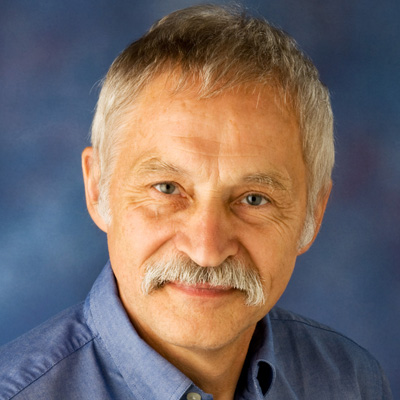Understanding the molecular basis of ear development to restore hearing once it is lost
Hearing loss in the aging population will lead to several hundred million hearing defected people worldwide while balance dysfunction of the elderly has even more dire consequences. When the oldest members of our communities fall and break a leg or a hip they have a hard time recovering, if they recover at all. What do these two incredible challenges for the elderly have in common? The biological mechanisms behind hearing loss and balance dysfunction can both be traced back to cells in the ear. Dr. Bernd Fritzsch, of the University of Iowa, aims to delay the onset of neurosensory loss so that seniors can enjoy their ‘golden years’ communicating as they used to and furthermore, being able to take part in physical activities without the risk of falling.
Past research has primarily focused upon understanding why the cells in the inner ear die. However, the conceptual problem is that nobody can tell which cells die unless they are already dying. More importantly, even if we are to understand how the cells die, it does not help us to keep the remaining cells alive, and prolong their health. Instead, Dr. Fritzsch’s research focuses on generating models that allow for the study of the molecular signature of an increasingly smaller population of viable cells to figure out what makes some of these cells survive while others die much earlier. Using a unique combination of novel mouse mutants to generate for the first time, animals in which all hair cells die prematurely, Dr. Fritzsch and his team are coming closer to developing treatments to boost these molecular signatures in all cells thereby increasing the viability of entire populations of cells for the benefit of organism.
Current research includes:
-
Why Cells are Dying?: Dr. Fritzsch is investigating the fundamental mechanisms behind why cells die with age. He and his team have already generated the mice that allow for analysis and have also collected animals to define the expression profile to start with sequencing and data analysis in the next six months. Such research will allow for a more developed understanding of why cells are dying during the aging process.
- Replenishing New Cells: Dr. Fritzsch has developed a method for converting naive cells that are proliferating into new cells. Therefore, although he may not be able to block the death of existing cells, he and his team may be able to make prevent further death and make new ones.
Bio
Dr. Fritzsch started research simply because many of the questions he asked as a student had no answers; with research, he believed he could change that. As an undergraduate student, he became fascinated by four dimensional problems and the development of the vertebrate ear vesicle into the ear labyrinth. Since then, Dr. Fritzsch has devoted over thirty-five years to the development of the ear. The ear’s connection to the brain has been the main focus of his over 300 research papers that have resulted in over 11,000 citations.
In his free time, Dr. Fritzsch spends his time raising and training greyhounds (http://www.sloughi.net/). Nicknamed, Sloughi-man for his commitment to training and enthusiasm for his pups, Dr. Fritzsch makes sure to balance his rigorous professional career with exciting hobbies. Aside from raising and training, Dr. Fritzsch enjoys spending time with his wife of thirty-five years.

